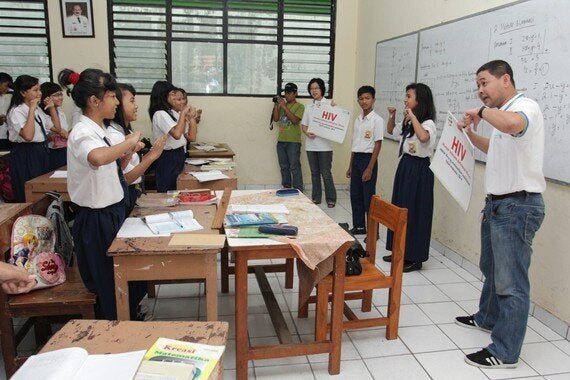Economic theory tells us that specialisation is the key to efficiency - if one individual or institution has an advantage or expertise, the entire ecosystem benefits if they focus. A division of labour delivers better, faster, cheaper results.
International development, like many other "industries", has adopted this approach to maximise resources and address global challenges more efficiently. When development professionals analyse and troubleshoot, they operate within silos. Cause has only one effect, and effects are attributed to only one cause. Problems are viewed and tackled through specific lenses: health, education, environment, poverty, gender, rights.
Increasingly, however, the dialogue is becoming more nuanced, more gray. Perhaps it's the Sustainable Development Goals deadline looming before us and the pressure to get all global issues on the agenda in a concise, practical way. Or perhaps it's that we are just getting more sophisticated about what has worked and what hasn't. If previous methodologies haven't fully solved global problems, maybe it's time to approach them differently.
More and more, we are hearing about the convergence of health and education. You can't learn if you are out of school sick. Lack of education leads to poverty and in turn the inability to access healthcare. To lead productive lives, people need both health and education: the two are cause and effect.
Take, for example, the fight against HIV and AIDS. The quest to halt and reverse the spread of HIV and AIDS has been a global priority for decades. Interventions have focused on the distribution of condoms and clean needles, access to affordable antiretroviral medication, and prevention through abstinence and safe sex. These interventions are effective. Progress has been made. Between 2001 and 2012, the HIV infection rate dropped by 44 per cent.
Yet despite these positive steps, the HIV infection rate among young people (15-24 years old) remained flat between 2001 and 2012. Young people continued to engage in risky behaviour, in part, because they had no idea how HIV was transmitted. Distributed condoms were of no use to those populations who didn't connect unprotected sex with the risk of infection.

Education is a key ally in the fight against HIV and AIDS. Actors in global health were savvy enough to recognize this, and many interventions focused on building knowledge and behavioural change. Levi Strauss, MAC, MTV, and Standard Chartered all enabled educational programs to mitigate risky behaviour and shift knowledge gaps. The efforts helped. Health and education converged a little more.
But the problem still exists, and its nuances not entirely appreciated. Perhaps most staggering is that there is one population that is bearing the brunt of new HIV infections: adolescent girls. In 2013, nearly 60% of all the new HIV infections globally were among young women (ages 15-25).Every year, 380,000 adolescent girls and young women are being infected. If the world wants to stop and reverse the spread of HIV and AIDS, it needs a targeted, specialised approach for this population.
So in addition to the education lens we can apply to HIV, there is a gender one. Adolescent girls are infected at a higher rate, because they are more vulnerable to gender based violence. They have less access to educational opportunities and healthcare infrastructures. They have less choice when it comes to condom use. Parents and community members are reluctant to discuss sex with them, because it's taboo, uncomfortable, inappropriate.
All of these factors make adolescent girls across the world extremely vulnerable to HIV infection, but the issue is much larger than just health. It's about creating safe places, stopping domestic violence, enabling girls' rights, erecting legal protection against rape, ending child marriage, empowering girls economically, killing stigma, equalising access to education.
If we truly want to stop the spread of HIV and AIDS, we need more nuanced, holistic interventions, and we have to focus on adolescent girls. That's why initiatives like the new partnership between Nike, the Gates Foundation, and the US' PEPFAR or the collaboration between Standard Chartered's Goal and Living with HIV programmes are so exciting. They appreciate that stopping HIV and AIDS isn't just about health; it's about garnering expertise and resources from a variety of experts and breaking down the silos we all still occupy. It's about working together, and it's about having a different story to tell by the time we arrive at the next set of development goals.
Image: Standard Chartered's Living with HIV Programme